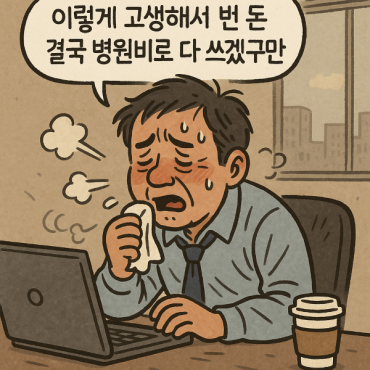SEOUL, May 25 (Korea Bizwire) — When shoppers eagerly camp outside a store in anticipation of purchasing expensive luxury goods or limited-edition products, they dash inside as soon as the store’s doors open, a phenomenon commonly known as an “open run.”
The retail industry, including well-known establishments such as Lotte, Shinsegae, and Hyundai department stores, has been leveraging the open-run phenomenon to attract customers and experience a steady increase in sales of luxury goods.
However, there have been criticisms regarding the unhealthy marketing effects of this practice, as it further fuels consumers’ desire to indulge in luxury items.
In the medical field, a similar phenomenon frequently occurs, particularly in pediatrics.
When visiting a pediatrician’s office, one often encounters a significant number of people waiting to be seen.
It is not uncommon for parents to take time off work, sacrifice sleep, or compete for online appointments to ensure their child receives medical attention.
This phenomenon, often referred to as “open run for pediatric clinics,” has become prevalent due to the closure of many pediatric clinics.
According to a recent survey conducted by the Seoul Institute on the state of private hospitals in Seoul in 2022, pediatrics has experienced the most significant decline among specialties over the past five years.
The number of pediatricians decreased by 12.5 percent, from 521 in 2017 to 456 last year.
In contrast, psychiatry witnessed a 76.8 percent increase, anesthesiology and pain medicine saw a 41.2 percent increase, and cardiothoracic surgery experienced a 37.5 percent increase during the same period.
The increase in pediatric clinic closures is not limited to Seoul; it is a nationwide issue. The Korean Association of Pediatricians reports that 662 pediatric clinics have closed in the past five years due to business difficulties.

This photo provided by the Seoul Metropolitan Fire & Disaster Headquarters shows an emergency patient transport by a 119 ambulance.
Even existing pediatricians are abandoning their specialization.
The Korean Society of Pediatric and Adolescent Gynecology (KSPAG) reveals that over half of the current pediatricians are contemplating a change in their specialty.
Approximately 600 pediatricians have already applied for training to switch to other fields.
The reasons behind this shift include a decline in the number of children due to reduced birth rates and the designation of immunizations as a national preventive measure, resulting in a significant decrease in income.
As a consequence, the remaining pediatric clinics are facing an open-run phenomenon, with dozens of patients flocking to clinics even before they open.
Dr. Lim Hyun-taek, the president of the KSPAG, highlighted an unfortunate incident where a child from Eunpyeong District in Seoul was admitted to Seoul National University Hospital in Jongno District after an exhaustive search for a hospital to address febrile convulsions.
This case exemplifies the scarcity of pediatric care, even in the heart of Seoul.
Dr. Lim expressed his concerns, stating, “Out of 188 fourth-year doctors, only 33 have applied to work in pediatrics next year. It deeply worries me that there are no hospitals across the country, including Seoul, capable of accommodating critically ill children.”
“The government must no longer turn a blind eye to this issue. Immediate and fundamental measures are needed to save the lives of our children,” he added.
Lina Jang (linajang@koreabizwire.com)







